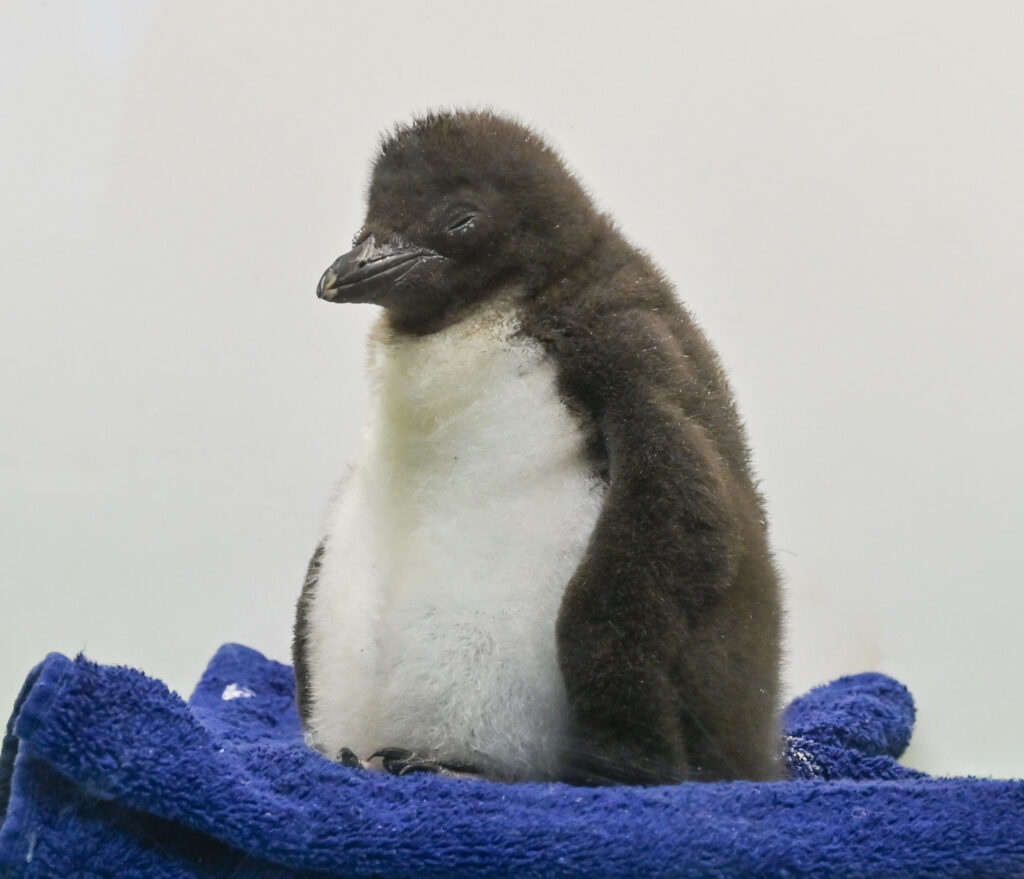The penguin community of Loro Parque expanded its family this Christmas with the birth of three beautiful little chicks who are now sweet and cuddly babies, and three baby penguin chicks who have joined the group in the Antarctic area where they live. Each of these tiny newborns is huge news for the protection of these species, which are under threat of extinction.
The newborns are now the most admired inhabitants of Planet Penguin in Puerto de la Cruz, especially the little hoppers, which are carefully fed by their keepers under the gaze of the visitors. Although the goal is always for each pair to care for their young, sometimes the parents are too young and inexperienced to give the chicks the attention and care they need to survive in the frozen landscape they inhabit, as on this occasion.
It is now the job of the expert penguin carers to provide the little rockhoppers with the care and attention the three chicks need. Comfortably housed in the baby penguin, they will be fed every three hours until they reach adequate weight and, above all, until their plumage grows to keep them safe from the cold temperatures.
This evolution includes the important process of cold adaptation, which begins at around 35ºC when the chicks are born, wrapped in a soft down that cannot yet insulate them from the low temperatures and humidity. Gradually, their organisms grow stronger as the environmental conditions change and the temperature drops. This process is adapted to each of the little penguins until it reaches 0ºC, the exact temperature that reproduces the conditions of their natural habitat.
Breeding of these penguin species is an annual process and requires the most specific attention and care to ensure that the eggs hatch and the chicks become part of the group. However, the success of each season is a perfect sign that the welfare conditions of the inhabitants of the Loro Parque Penguinarium are more than adequate.
Southern Rockhopper Penguins are small in size, and their most distinctive feature is their yellow eyebrows or tufts, which give them a funny appearance and make them the most amusing and endearing inhabitants of Planet Penguin. Their name comes from their remarkable agility in climbing and leaping over steep terrain.
Papuas are expert builders of high nests, which they create by piling up stones. Unashamedly, they often take them from other nearby nests, turning the task into a thorough process of placing and removing small rocks.
At Loro Parque, the penguins live in an ecosystem created for them, where the temperature and light conditions of the Antarctic are carefully reproduced. The intensity of light in the facility will vary whether they visit during the polar winter or the warmer months of the region. Every day, 12 tonnes of artificial snow gently falls on its inhabitants: four species of penguins coexisting in an ecosystem of enormous beauty —rockhopper, king, Gentoo and chinstrap.
A special place, where the silent and white atmosphere of the Antarctic region unfolds before the visitor while its inhabitants perform their beautiful underwater flights.











